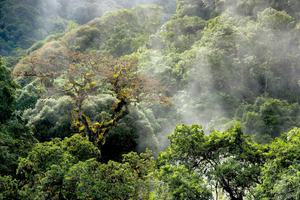A drop in air pollution in India at the height of the coronavirus pandemic slowed the melting of snow in the Himalayas, a new study finds.
More than a billion people in South Asia depend on the steady melt of snow and ice in the Himalayas through the spring and summer for fresh water. But particulate pollution from cars, trucks, factories, and power plants in South Asia is wafting over the mountain range, disrupting this process. Soot darkens snow and ice, causing it to absorb more of the sun’s energy and melt faster.
Using satellite data, researchers tracked the impact on snowmelt of a two-month nationwide lockdown in India in the spring of 2020. As business came to a halt, particulate pollution dropped off, and the effect on the Himalayas was profound. The decline in pollution staved off the melting of more than 27 million metric tons of snow and ice, as compared with 2019, the study found. The results were published in the journal PNAS Nexus.
With rising temperatures, “ice and snow over the Himalayas have been melting at an accelerating, alarming rate in recent decades,” the authors wrote. At the current pace of warming, up to 70 percent of Himalayan glaciers could be lost this century. Cutting particulate pollution in South Asia, they said, could help preserve what snow and ice remain.
ALSO ON YALE E360
As Himalayan Glaciers Melt, a Water Crisis Looms in South Asia



